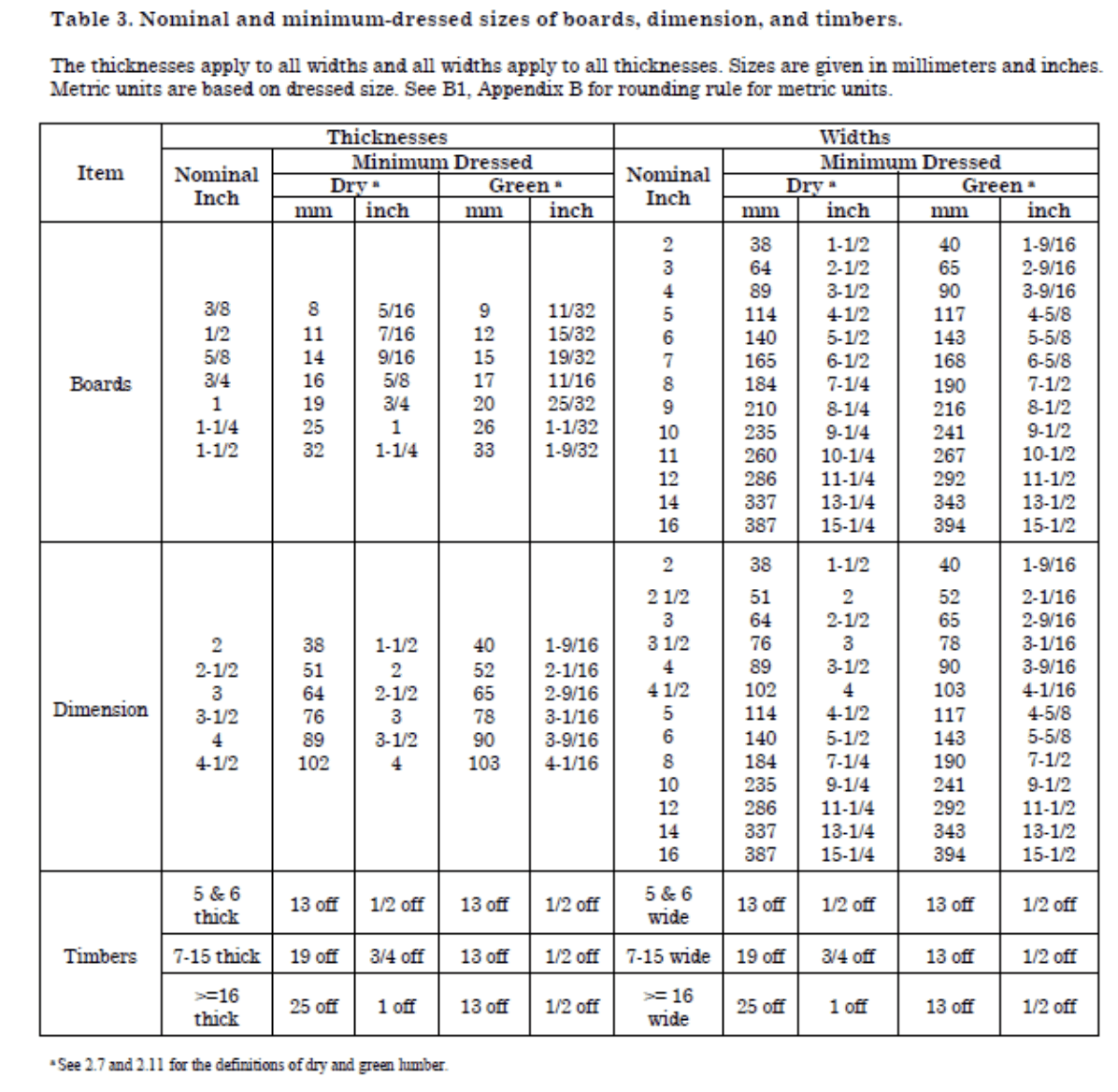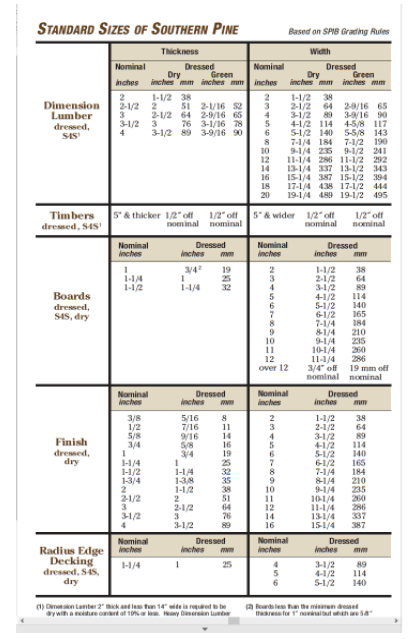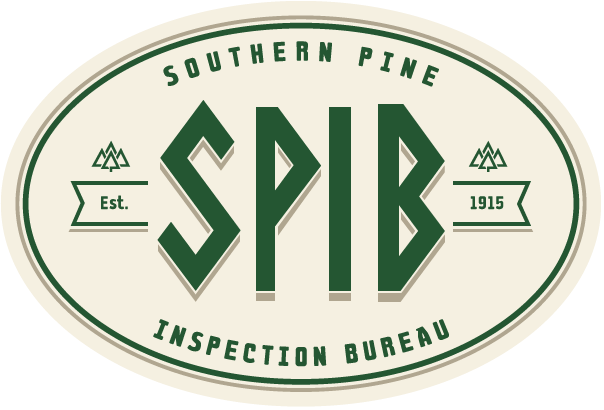
Nominal Vs Actual Lumber Sizes

Softwood Lumber Sizes
To the novice do it yourselfer softwood lumber sizes can be hard to understand. Why isn’t the 2×4 at the lumber yard 2 inches thick and 4 inches wide? The 4×4’s are 3 ½ x 3 ½ and the 1×6’s are ¾ of an inch thick and 5 ½ wide. The first dimensions are its nominal ones, the second measurements are its actual or minimum dressed sizes. The reason for the differences is because lumber sizes are traditionally given in their nominal size. This is a well-established industry practice.
Why are the nominal dimensions of lumber larger than the actual dimensions?
The simple answer is the nominal measurements were derived from a board’s size before it has been dried and planed smooth (surfaced) on all 4 sides. The actual measurements are the final dried and surfaced size. Originally, (almost 100 years ago), a 2×4 was cut as a rough green piece that was close to a full 2 inches thick and 4 inches wide, but by the time the boards were dried and planed the boards became smaller, approaching the now standard 2×4 dimensions of 1 ½ x 3 ½ inches in size. Green southern pine lumber shrinks in width and thickness as it dries, and surfacing removes up to an additional ¼ inch from both dimensions. Today the boards are no longer cut green to a full 2×4 inches. Modern sawing, drying, and planing technologies are much more precise, and the boards can be cut a little smaller than 2×4 inches and still leave the board large enough to dress after drying at 1 ½ inches thick and 3 ½ inches wide.
A few years ago consumer groups brought several lawsuits against some of the big box stores and a few hardware and building supply chains for false advertising by selling lumber that they maintained, was undersized.
The courts eventually found that lumber sizes are appropriately described in nominal inches in the US, or in millimeters in other countries. Builders, design engineers, architects, lumber buyers, and sellers of lumber are all familiar with the differences between the nominal and actual sizes of lumber. The lawsuits were settled, and it was found that the use of nominal sizes to describe lumber sizes was a long-standing and accepted standard industry practice.
However, there was one change mandated by the courts. The size labels now have a new requirement. According to the American Wood Council, the National Institute of Standards and Technology permits stores to label lumber with nominal dimensions if the label or other sign clearly states that the size given is a nominal size and states “the actual or minimum measurements.”
So now in most places, you should see both the nominal size and the actual dimensions on the label, or other sign, at the point of sales.
Softwood Dimension Lumber Sizes
Dimension lumber is lumber cut and finished S4S, (surfaced four sides) and is available in standardized sizes. It is the construction lumber commonly used for framing buildings and is often referred to as framing or Dimensional lumber.
Technically, dimension lumber is defined as sawed softwood lumber from 2 to 5 inches (5 to 12.7 centimeters) thick and from 4 to 12 inches (10.2 to 30.5 centimeters) wide. The length of dimension lumber can range from 6 to 24 feet. The Nominal and standard sizes of lumber can be found in the Voluntary Product Standard PS 20-20 American Softwood Lumber Standard, http://www.alsc.org/greenbook%20collection/ps20.pdf This standard lists the nominal and minimum dressed sizes for all categories of structural and nonstructural lumber.
The most commonly available dimension lumber sizes are 2×4 through 2×12. Notice that the 2×4’s and 2×6’s are ½” less than nominal in width and the 2×8, 2×10’s and 2×12’s are ¾ of an inch less than nominal. This is common knowledge for the experienced lumber user and is the result of the fact that wider lumber is reduced more in width than the narrow lumber during drying. These differences in width are the same for boards.

Voluntary Product Standard PS 20-20 American Softwood Lumber Standard.
The Southern Forest Products Association (SFPA) publishes a comprehensive pamphlet, “The Southern Pine Use Guide,” that also lists nominal and standard sizes for all Southern Pine products along with design values, span tables, and grade descriptions. http://www.southernpine.com/publications/
The table below is extracted from this publication and shows the Standard Sizes of Southern Pine Dimension, Timbers, Boards, Finish, and Radius Edge Decking.

From the Southern Forest Products Association (SFPA).
https://www.southernpine.com/publications/
IN CONCLUSION
Now you understand why the nominal size is different from the actual size.
Nominal sizes harken back to the original rough green lumber sizes, the actual sizes are the size of the board after the rough green lumber has been dried and surfaced smooth on all four sides.
The nominal size is the accepted standard terminology used for buying, selling, and specifying softwood lumber.
